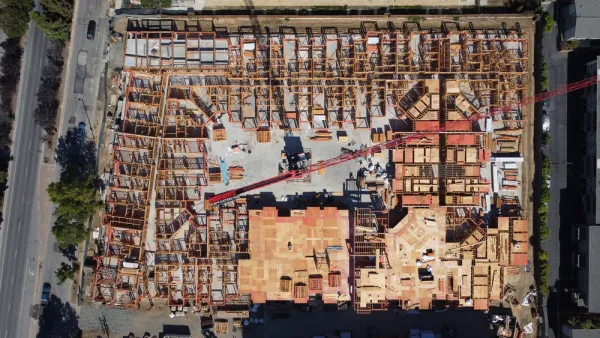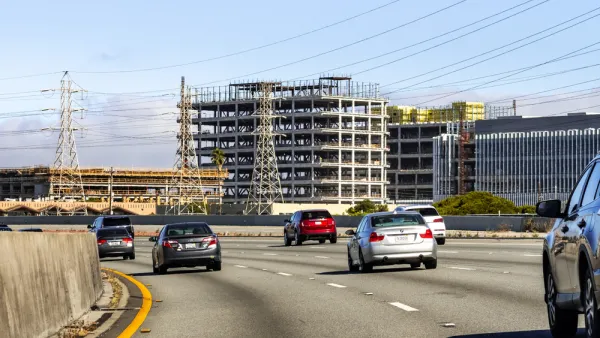Palo Alto, a Silicon Valley city with a history of exclusionary zoning tactics, has produced a new Housing Element that calls for more than 6,000 housing units to be built in the city by 2031.

The city of Palo Alto, California will rely on accessory dwelling units, transit oriented development, and zones previously dedicated to industrial uses in a plan to add 6,000 additional housing units by 2031.
The Silicon Valley’s Housing Element will now be subject to review by state housing authorities as part of the Regional Housing Needs Assessment process that has tripped up numerous municipalities around the state this year. Palo Alto’s Housing Element is one of a wave of similar plans expected around the Bay Area in the coming days and weeks. Southern California cities didn’t do so well with the process, as documented by Planetizen in October, exposing themselves to the new, so-called “Builder’s Remedy,” which forces local governments to forfeit land use control when Housing Elements fail to meet state standards for new housing.
Palo Alto has previously been one of the prime examples of cities in the state of California committed to preventing new density despite proximity to employment centers, making news earlier in 2022 for a strategy to sidestep a recently approved state law, SB 9, by declaring a large swath of the city as a new historic district. The political equation in the city has changed recently, however.
“Getting the state to approve the Housing Element will be a key priority in the coming months for the City Council, which will see three seats turn over to new members. All council candidates and sitting members have named housing as a top priority item, though there is some disagreement over how aggressively the city should strive to meet the state goals,” reports Gennady Sheyner for Palo Alto Online.
According to the article, the proposed Housing Element calls for a regionally mandated 6,038 new homes, in addition to “strategies for preserving existing housing, streamlining the development approval process and promoting affordable housing.” The “most aggressive” of the changes proposed by the Palo Alto’s Housing Element would rezone industrial and commercial areas around San Antonio Road and Fabian Way for residential use.
FULL STORY: Palo Alto releases plan to add more than 6,000 dwellings

National Parks Layoffs Will Cause Communities to Lose Billions
Thousands of essential park workers were laid off this week, just before the busy spring break season.

Retro-silient?: America’s First “Eco-burb,” The Woodlands Turns 50
A master-planned community north of Houston offers lessons on green infrastructure and resilient design, but falls short of its founder’s lofty affordability and walkability goals.

Delivering for America Plan Will Downgrade Mail Service in at Least 49.5 Percent of Zip Codes
Republican and Democrat lawmakers criticize the plan for its disproportionate negative impact on rural communities.

Test News Post 1
This is a summary

Test News Headline 46
Test for the image on the front page.

Balancing Bombs and Butterflies: How the National Guard Protects a Rare Species
The National Guard at Fort Indiantown Gap uses GIS technology and land management strategies to balance military training with conservation efforts, ensuring the survival of the rare eastern regal fritillary butterfly.
Urban Design for Planners 1: Software Tools
This six-course series explores essential urban design concepts using open source software and equips planners with the tools they need to participate fully in the urban design process.
Planning for Universal Design
Learn the tools for implementing Universal Design in planning regulations.
EMC Planning Group, Inc.
Planetizen
Planetizen
Mpact (formerly Rail~Volution)
Great Falls Development Authority, Inc.
HUDs Office of Policy Development and Research
NYU Wagner Graduate School of Public Service





























